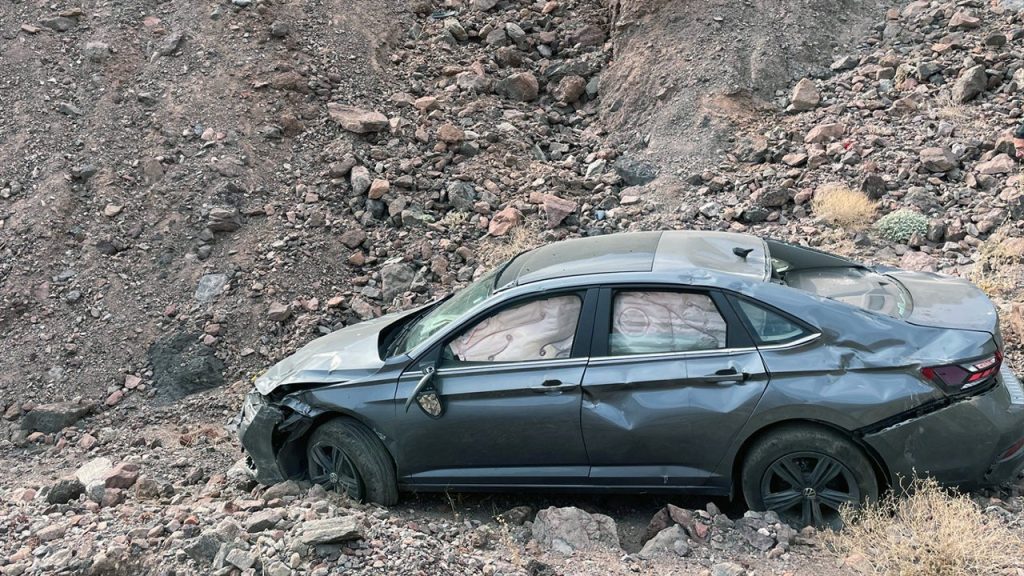A tragic incident occurred at Death Valley National Park in California when a man died from heat exposure in triple-digit temperatures. The victim, identified as 57-year-old Peter Hayes Robino from Los Angeles, drove his car off a 20-foot embankment on August 1. Witnesses reported seeing Robino stumbling towards his car before the incident, with his responses not making sense. Despite offers of help, he declined and eventually drove off the embankment. Emergency responders arrived on the scene promptly after the incident, but Robino was declared dead shortly after their arrival. An autopsy later revealed that he died of hyperthermia, highlighting the dangers of extreme heat.
The incident at Death Valley National Park serves as a tragic reminder of the dangers of extreme heat and the importance of taking precautions, especially during the summer months. This was the second heat-related death at the park that summer, further emphasizing the importance of staying hydrated, avoiding prolonged exposure to the heat, and seeking air-conditioned environments when possible. Symptoms of overheating, such as confusion, irritability, and lack of coordination, should not be taken lightly, as they can quickly escalate and lead to fatal consequences. Park officials stressed the importance of following safety guidelines, such as avoiding hiking after 10 am at low elevations, drinking plenty of water, and eating salty snacks to replenish electrolytes.
Park Superintendent Mike Reynolds expressed his condolences to Robino’s family and friends, highlighting the need to be vigilant and aware of the dangers posed by extreme heat. The National Park Service (NPS) responded swiftly to the incident, with emergency responders starting CPR and moving Robino into an air-conditioned ambulance. Despite their efforts, he could not be revived, underscoring the severity of heat exposure in such extreme environments. The NPS emphasized the importance of heeding safety guidelines and being mindful of one’s physical condition when visiting national parks, particularly in areas known for high temperatures.
The tragic death at Death Valley National Park prompted park rangers to reiterate safety recommendations for visitors during the summer months. Staying in or near air-conditioning, avoiding hiking during peak heat hours, staying hydrated, and consuming salty snacks are crucial precautions to prevent heat-related illnesses. Extreme heat can have severe consequences on the body, leading to symptoms such as confusion, irritability, and lack of coordination. It is essential for visitors to be aware of these signs and take appropriate measures to protect themselves from heat exposure, especially in environments like Death Valley, where temperatures can reach dangerously high levels.
The incident involving Peter Hayes Robino underscores the unpredictable and deadly nature of extreme heat, particularly in environments like Death Valley National Park. Despite the efforts of bystanders and emergency responders, Robino succumbed to hyperthermia, highlighting the need for increased awareness and caution when visiting areas known for high temperatures. The tragic outcome serves as a sobering reminder of the importance of heeding safety guidelines, staying hydrated, and seeking shelter from the heat to prevent heat-related illnesses and fatalities. As summer temperatures continue to rise, visitors to national parks must remain vigilant and prioritize their well-being to avoid similar tragedies.


